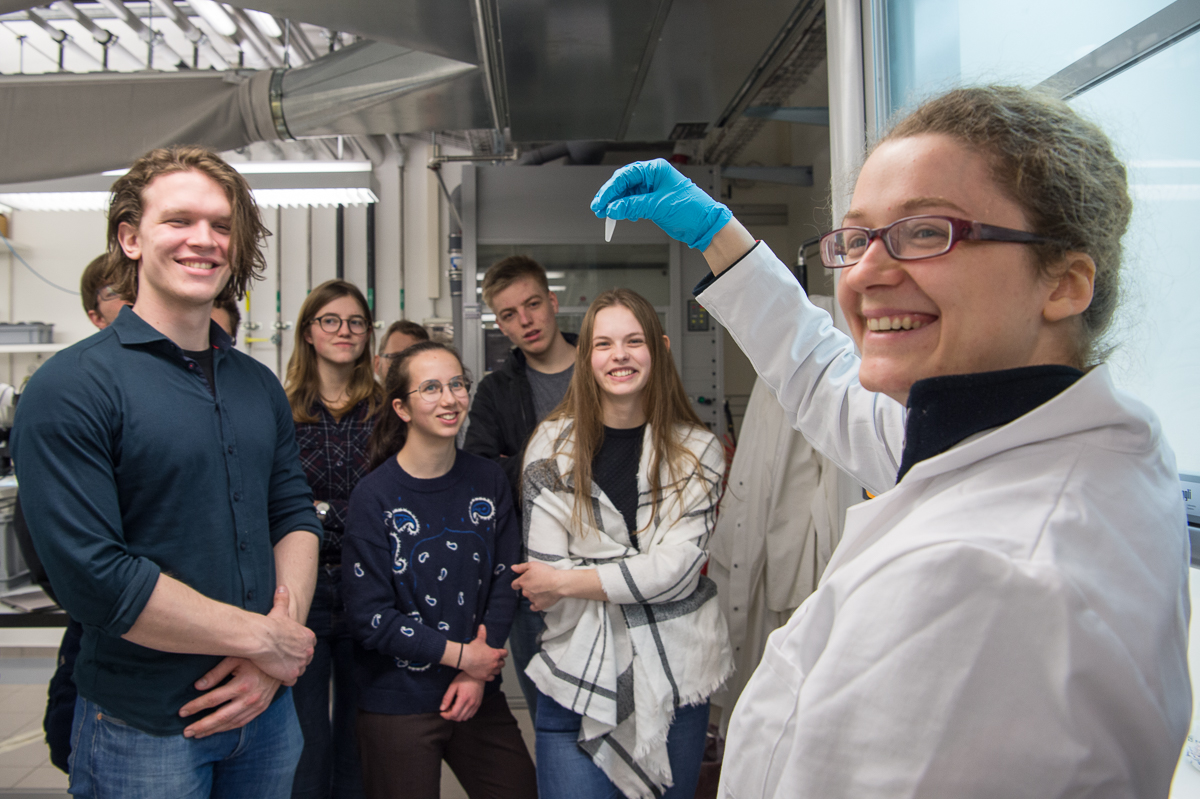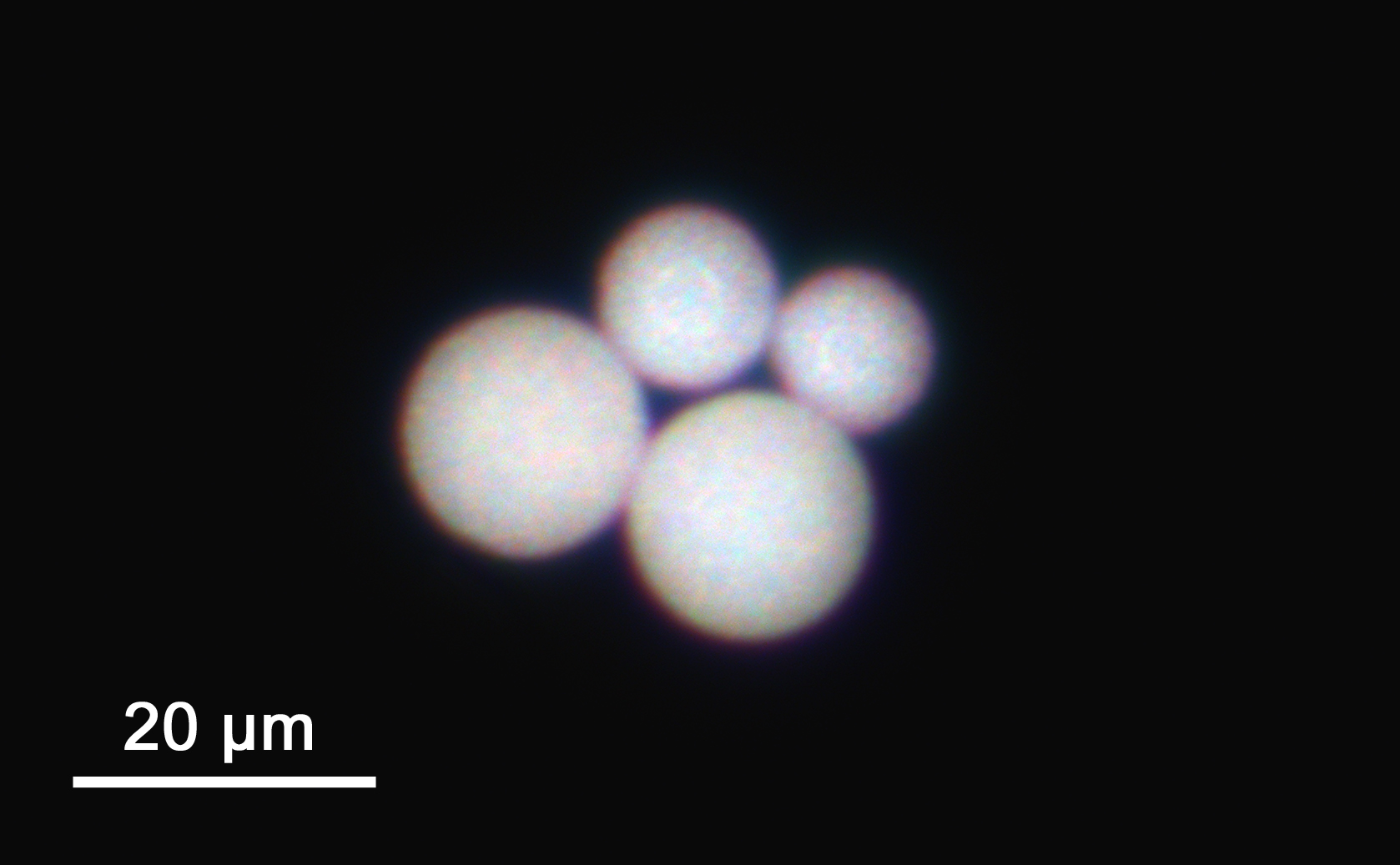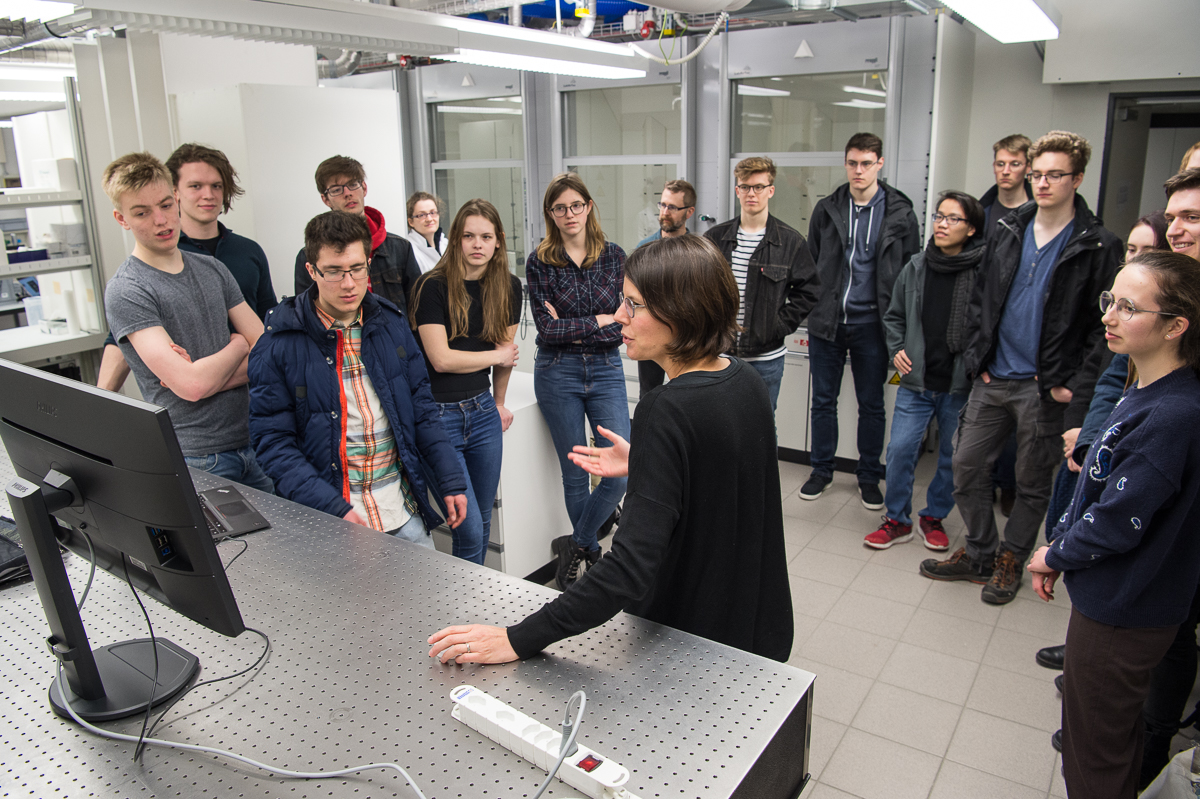Shake it! Nanoshake in Physics Lab
A group of “Honours Academy Students” from the Dutch Radboud University Nijmegen visited ETH Zurich at the end of February. They were given selected insight into top-level research in the Departments of Biology and Physics, after a guided tour of the Hönggerberg campus gave them a first impression of the research location. We accompanied them to the laboratories of ETH Professor Rachel Grange's research group.

Second Harmonic Generation
In certain environments, instruments have to function fully reliably and maintenance-free and at the same time should be as compact and light as possible – for example in space. Instruments working well elsewhere must be adapted to this challenging environments to reduce maintenance problems. For example, a green laser like the one in a laser pointer: The green laser light is generated from originally infrared, invisible light. In a highly energy-consuming process, long-wave infrared light is converted into short-wave light by means of a cuboid crystal: One part of the light exits in green – with double the frequency of the incoming light. This frequency doubling is called “Second Harmonic Generation”.
Search for new structures
For frequency-doubling crystals with a translational symmetry should be absolutely fixed at a right angle to the incoming light beam. For very small instruments in extreme environments, such as strong vibrations and high temperature fluctuations, this is a challenge. The research group led by Prof. Rachel Grange is therefore looking for new structures that function reliably even under such conditions. On the one hand, structures made of semiconductor materials only a few nanometres in size with properties that the nanoscientist Grégoire Saerens explained to the students in his lab at Hönggerberg. On the other hand, metal oxides such as lithium-niobate nanocubes, which Jolanda Müller assembles in desired shapes. In her Master's project, she is supervised by Dr. Romolo Savo, who conducts this research as part of a external pageMarie Skłodowska-Curie projectcall_made.
Microballs made of nanocubes
Jolanda Müller produces microballs from nanocubes. It is obvious: If a ball of many cubes, instead of a cube-shaped crystal, rotates around its own axis, it always remains optimally positioned for the incoming infrared light, in contrast to the cube. The tricky question is then how frequency-doubling crystals of 100–400 nanometres can be transformed into microspheres of about 20 micrometres in diameter? 20 micrometres is about the diameter of a human hair. The answer is: Just shake it!

The nanoshake
Jolanda Müller produces the nanoshake from lithium-niobate powder, water and oil. One of her colleagues prepares the powder specifically for this purpose. She shakes the ingredients to an emulsion. The crystalline lithium niobate accumulates in tiny water bubbles that form in the oil. She lets the water evaporate. This compresses the naturally spherical water bubbles with the enclosed lithium niobate until a tiny, round crystal cluster remains. The researcher now cleanses it of the oil. The balls of non-directional crystals created in this way have now the desired property: whatever position they are in with respect to the incoming light beam, they double the frequency of the beam as desired. More precisely formulated: A long-wavelength light beam hits the sphere, which interacts with the light in every position in such a way that the frequency doubles for part of the light and thus generates an intense short-wavelength light beam. The short-wavelength, energy-rich light can be used for all kinds of measurements.
Resonances in the sphere
During this basic research on the microspheres, the researchers also observed resonances formed within these balls, which additionally contribute to the amplification of the energy of the exiting light How is this possible? If the spheres happen to have the correct diameter so that light waves are reflected off the walls at an optimum distance from their wavelength, the light is amplified. We can observe this phenomenon not only with light, but also with sound waves. It also works just as well on large scales as it does on small ones. For example, in the echo, acoustic mirrors, Greek amphitheatres or the reflectors of car headlights. Currently you can experiment with this phenomenon yourself on the campus Hönggerberg.

Tour through academic spheres, organized by ETH Global
Despite their intensive programme, the students interested in physics followed the researchers' work with great attention and repeatedly asked questions. The other half of the guests – with main interest in biology – took part in two exquisite guided tours through the laboratories of the Department of Biology. Before this Hannes Heller, an ETH student, led the visitors over the entire campus and gave them an introduction to ETH Zurich. As one of their teachers already announced after this tour, he expects from them a report on the special lab tours. At the end of the tours, the wonderful weather on 28 February 2019 certainly came in handy: feet up and enjoying the sun without worrying about light reflections and frequency doubling of photons. On the following day they continued their discoveries at ETH Zurich. The programme was organised by ETH Global, the International Office of ETH Zurich. As employees of ETH Zurich, we would have wished to just join them on their tour.
